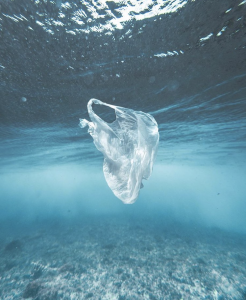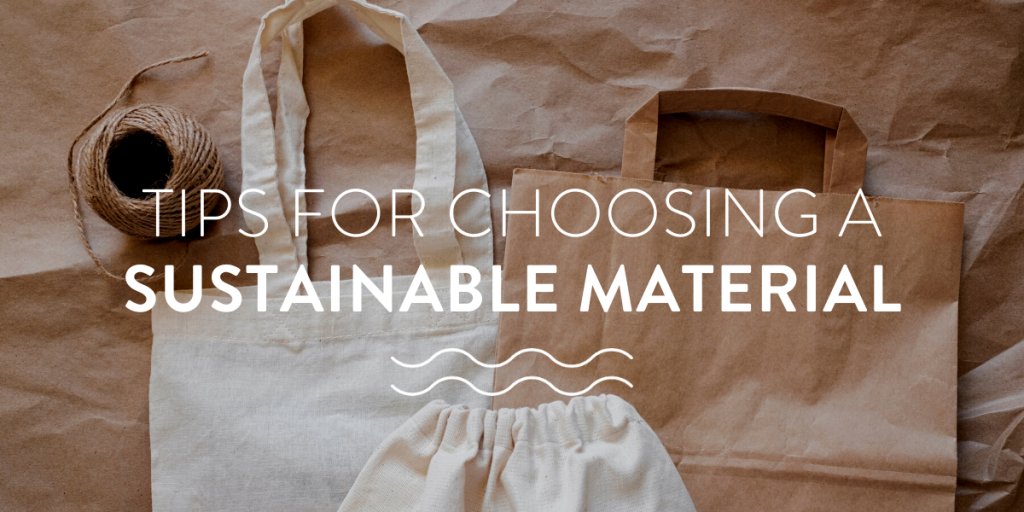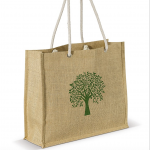In recent years there has been increased awareness about how much consumption habits can have a direct and major impact on the environment. With it came a sense of responsibility from consumers. More and more people have developed an interest in buying sustainable products and a better understanding of the production chains. Thinking about the most sustainable material for your purchases can make a big difference to the planet. It is another thing we can all do to do our part and be a more ethical consumer.
How are our purchasing habits impacting the environment?
Well, several factors are to be considered. Offer always depends on demand. The more consumers that buy a product, the more the product is produced. This means it is very important to understand the production process behind what we are buying to make the best and most aware decisions.
It is widely understood that plastic or plastic derived products are very damaging to our planet. Not only do these products take decades, if not hundreds of years to degrade, but the chemicals used to produce plastic also generate pollution.
In short, plastic is harmful throughout its entire lifecycle. Yet still, one trillion disposable plastic bags are used every single year across the globe! To give a more visual idea:
- This is five times the number of stars in our galaxy (200 billion).
- It equates to 2 million plastic bags used every minute.
- The whole production of plastic bags uses up 8% of our oil resource.
The extraction of the oil (or gas in some cases) generates pollution, as well as processing fossil fuels into plastic. Once it is discarded, plastic will most likely end up in landfills or our oceans where it creates more pollution and releases harmful chemicals.

On a more positive note… we, consumers, have the power to change this! We need to ensure that the products we purchase are more sustainable in terms of generated waste (recyclable material being ideal) and pollution during the production process.
Read: How We Make Sustainable Swimwear!
Let’s break down the different steps we can take in the decision-making process to being a more ethical consumer. We will focus on how to identify the most sustainable material for a tote bag, although most of the points will apply to other purposes (clothes, etc)…
Things to consider when picking more sustainable materials:
Is the material recyclable?
This is probably the most obvious question you want to ask yourself before buying a product. As an ethical consumer, the main goal is to create a virtuous cycle. Where every product purchased can be recycled and reused in the future. Making sure the purchased material can be recycled can resolve the following environment issues:
- Decrease landfill space requirements. Keep in mind that synthetic fibre products do not decompose and that natural fibres may release greenhouse gasses (methane, CO2)
- Limit the use of virgin fibre
- Reduce consumption of energy / water to produce virgin fibre
- Avoid pollution
- Lessen demand for dye
Is the material widely available in the country of purchase?
This is a major factor in terms of carbon footprint. Importing a raw material, or a finished product to the country of purchase implies some additional transportation, thus CO2 and other particles emissions. Making sure the material source is grown in the country (or already available, in the case of recyclable plastic-based products etc.) will limit pollution in transportation.
Ensuring that the raw material is available in the country of purchase is not enough though. Some studies have shown that developed countries build up their “green” reputation by offshoring the “dirty” segments of the production to poorer and less regulated countries. In other words, a country could grow hemp in large quantities, but offshore the “dirty” segments of hemp-based production, before importing the final product back. Not only does this process involve the usual pollution issues related to production itself, but it also creates pollution from additional transportation. Not even mentioning the ethical problems that it raises! The high carbon footprint is only relocated to other countries, which often have “jobs-first” policies.
As an example, The Proceedings of the National Academy of Sciences (PNAS) of the United States calculated in 2017 that 17% to 36% of four major air pollutants emitted in China came from production for export.
Basically, the more local production is the more sustainable the product is going to be.
Total energy / resources used for production.
It is important to keep in mind that pollution does not only come from plastic waste in our oceans or in landfills, but also from the production process. For a material to be the most sustainable, it must use less energy / resources during production than plastic based products require.
For instance, as popular as cotton tote bags are, water consumption needed to grow cotton crops is so high that it does not necessarily make it a highly sustainable material. Better Cotton Initiative (BCI: non-profit organization) states that traditional cotton production takes about 10,000 liters of water to produce one kilogram of cotton fabric.
What is the material breakeven number?
Here comes one of the most essential questions you can answer to identify the most sustainable material possible. A “breakeven number” corresponds to the number of times a product must be used to balance its impact to manufacture. For example, how many times does a cotton tote bag need to be used before it becomes more environmentally friendly than a plastic bag?
Various studies have shown that a cotton bag needs to be used about 173 times to become more sustainable than a disposable plastic bag. On the other hand, a bag made of Nylon or Polypropylene will only need to be used 14 times to be more sustainable than a single use bag.
Overall, it is not enough to buy a reusable tote bag to consume more ethically. Purchasing several cotton bags and leaving them forgotten in your closet is as harmful to the environment as using disposable plastic bags!
What cause do you want to focus on? What are your personal priorities and your purchasing behaviours?
There is not one universal answer to these questions. The production chain generates so many issues of different natures that it is truly difficult to tackle them all. Since it is impossible to be 100% sustainable on every level, each individual must identify what causes they want to focus on most, in order to make the most sustainable purchasing decisions for them.
Above all, we need to know ourselves, our habits and priorities. There is not one material that stands as the most sustainable of all. Instead, different materials are best for different causes and priorities. Human rights for the workforce might be someone’s top priority, above carbon footprint throughout the production chain.
Our habits can also help determine what material will have the most positive impact. Knowing ourselves will help identify the best purchase we can make. If one is the type to buy a tote bag and not use it much, or keep forgetting it when doing the groceries, then cotton bags will definitely not be the right option. Instead, a hemp bag might be a better choice. It is a different story if one is going to use their cotton bag daily.
What is an easy way to concretely decide on a sustainable material for you?
As cliché as it may sound, writing things down is often a great way to clear up your mind! Making a scorecard table with all the different criteria will help you visualise the pros and cons for each material. You can then assign a score for each category, 1 being the lowest. Add up every point from each criteria to give each material a total score. The ones with the highest scores will be the best material according to your priorities.
Not quite clear yet? Let’s give an example below for practice:
In the example below, “cotton traditional” gets a low score for the breakeven number because you need to use a cotton tote bag way more times (173) than a Nylon bag (14) for it to be more sustainable than a disposable plastic bag. Thus, Nylon gets the best score in this category, etc. The total score adds up all points for one material. The highest score is the most sustainable material for the categories that you selected! In this case, Hemp Grainy.
Of course, the absolute best purchasing habit is simply to not purchase at all when not necessary. Above all let’s remember the main rules of sustainable consumption! Reduce, Reuse, Recycle!







